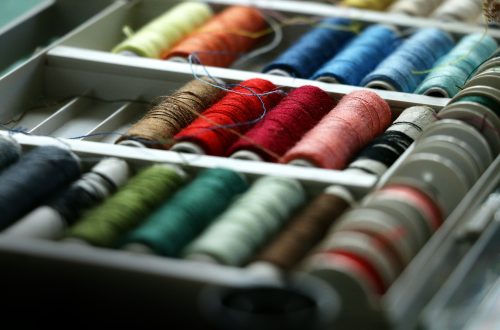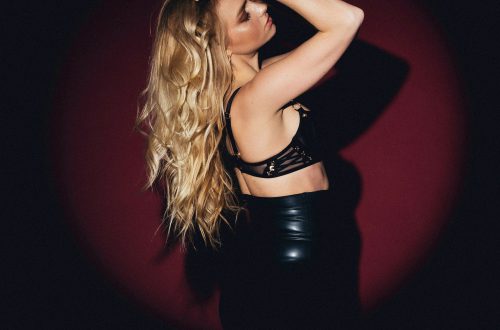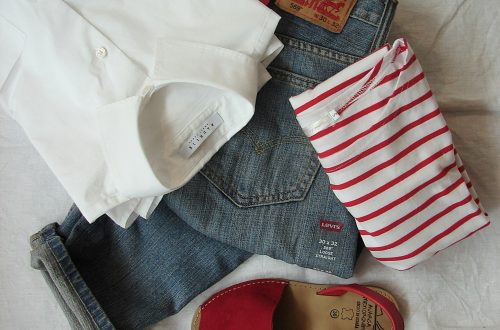
How To Shop For The Perfect Pair Of Jeans: Tips For Every Body Type
Understanding your body type is crucial when it comes to finding the perfect pair of jeans. Every individual has a unique shape that can influence how denim fits and flatters their figure. Rather than conforming to a one-size-fits-all mentality, recognizing your body type allows you to make informed choices that enhance your natural silhouette.
For example, if you have an hourglass figure, look for jeans that accentuate your waist while providing enough room for your hips and thighs. High-waisted styles can be particularly flattering, as they highlight curves without creating bulk. In contrast, those with a pear-shaped body may benefit from bootcut or flared jeans that balance wider hips with a more streamlined upper half.
If you’re athletic or have a straight body shape, consider options with some stretch or embellishments like pockets and washes that add dimension. On the other hand, individuals with an apple-shaped figure might prefer jeans with a looser fit around the waist or styles that feature higher rises to create a more defined waistline.
Ultimately, understanding your body type not only helps you select jeans that fit comfortably but also empowers you to embrace your individuality. By focusing on what works best for you rather than chasing trends, you’ll find denim that not only fits well but also makes you feel confident and stylish in every outfit.
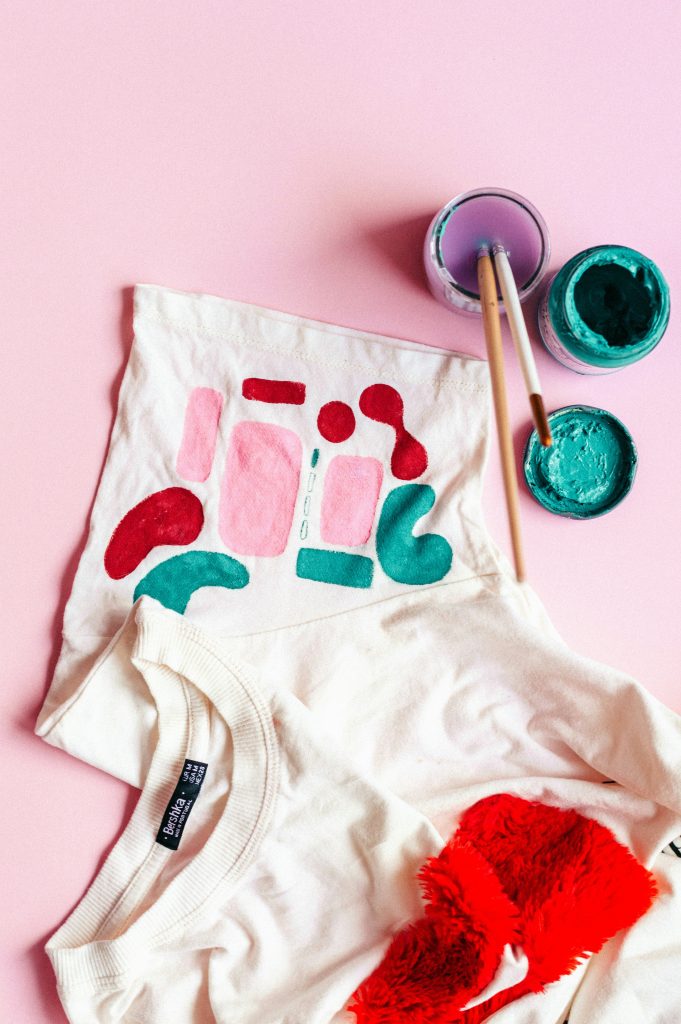
Essential Jean Styles For Every Body Type
When it comes to finding the perfect pair of jeans, understanding essential styles can significantly enhance your shopping experience, especially as different cuts flatter various body types. For those with an hourglass figure, high-waisted jeans are a fantastic option. They accentuate the waist while providing ample room for curves through the hips and thighs, creating a balanced silhouette.
If you have a pear-shaped body, opt for bootcut or flared jeans. These styles balance out wider hips by adding volume at the hemline, drawing attention away from the lower body. On the other hand, straight-leg jeans work wonders for athletic builds; they provide a relaxed fit without clinging too tightly to any particular area, creating a streamlined look.
For individuals with an apple shape, consider styles that offer structure but aren’t overly tight around the midsection. Look for mid-rise or relaxed-fit jeans that provide comfort while still maintaining shape. Lastly, those with petite frames should gravitate towards cropped or ankle-length jeans that elongate the legs and avoid overwhelming proportions.
Ultimately, experimenting with different washes and details—like embellishments or distressing—can further personalize your choice. By recognizing how these essential styles cater to specific body types, you can confidently navigate your denim journey and find a pair that feels like it was made just for you.
How To Measure Yourself For The Perfect Fit
When shopping for the perfect pair of jeans, accurate measurements are crucial to achieving a fit that flatters your body type. Start by gathering a flexible measuring tape and a notepad for recording your measurements.
Begin with your waist, which is typically the narrowest part of your torso. Wrap the measuring tape around this area, ensuring it’s snug but not tight. Take note of the measurement while standing naturally—don’t suck in your stomach! Next, measure your hips at their fullest point, usually around the widest part of your buttocks. This will help you determine how well the jeans will accommodate your shape.
For inseam measurement, which dictates how long the jeans will be, measure from the top of your inner thigh down to where you want the hem to fall—this could be at or just above the ankle for various styles. If you’re unsure about this length, you can try on different pairs or refer to existing jeans that fit well.
Lastly, consider measuring around your thighs and calves if you’re looking for a specific fit in those areas as well. By taking these precise measurements and keeping them handy while you shop—either online or in-store—you’ll set yourself up for success in finding a pair of jeans that fits beautifully and comfortably, enhancing your unique silhouette rather than constraining it.
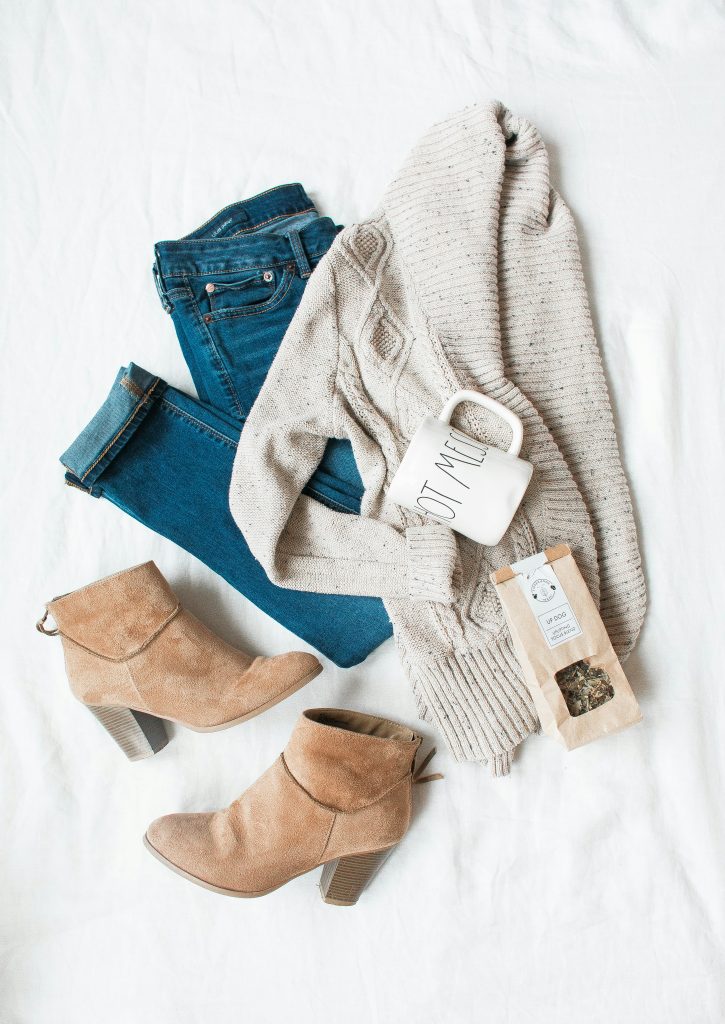
Fabric Matters: Choosing The Right Denim
When it comes to finding the perfect pair of jeans, the fabric plays a crucial role in both comfort and fit. Denim is not just a single type of material; it varies widely in weight, stretch, and texture. Understanding these differences can help you select a pair that flatters your body type while providing the right level of comfort.
Start by considering the weight of the denim. Heavier fabrics, like rigid or raw denim, offer structure and durability but can be less forgiving for certain body types. If you prefer a more fitted look without sacrificing comfort, opt for mid-weight options that provide some give without losing shape.
Stretch is another essential factor to consider. Jeans blended with elastane or spandex offer flexibility and allow for ease of movement. This is particularly beneficial for curvier shapes or those who may be between sizes. However, it’s important to strike a balance—too much stretch can lead to jeans that lose their shape over time.
Texture also matters; softer finishes can feel luxurious against the skin but may not hold their form as well as traditional denim. Look for variations like washed or distressed finishes if you’re seeking a more relaxed vibe, but ensure they still align with your personal style.
Ultimately, choosing the right denim fabric involves understanding how each option interacts with your unique body shape and lifestyle needs. The perfect pair isn’t just about aesthetics; it’s about feeling good in what you wear every day.
The Importance Of Rise: Finding Your Ideal Waistline
When shopping for the perfect pair of jeans, understanding rise is crucial in achieving both comfort and style. The rise refers to the distance from the crotch seam to the top of the waistband, and it plays a significant role in determining how jeans fit your body shape.
For those with a longer torso, high-rise jeans can create a flattering silhouette by elongating the legs and providing ample coverage. They often sit at or above the natural waistline, offering support and helping to smooth out any areas that might otherwise feel less secure. Conversely, if you have a shorter torso or prefer a more laid-back look, mid-rise options are typically your best bet.
They provide balance without overwhelming your frame, striking an ideal compromise between comfort and fashion.
Low-rise jeans may appeal to those seeking a trendy aesthetic but can pose challenges for different body types. They often require careful consideration regarding proportion and can sometimes lead to discomfort if they sit too low on the hips.
Ultimately, finding your ideal waistline involves more than just choosing between high, mid, or low rise; it’s about understanding how each style interacts with your unique body shape. A well-fitting pair of jeans should enhance your confidence while making you feel effortlessly stylish—an outcome achievable through mindful selection of rise.
Tips For Trying On Jeans: What To Look For In The Fitting Room
When trying on jeans, the fitting room becomes your personal style laboratory. Start by selecting a range of sizes and styles to find what truly flatters your unique body type. As you slip into each pair, pay attention to how they feel at the waist. A well-fitting waistband should be snug but not constricting; you should be able to fit a couple of fingers between the band and your skin without feeling uncomfortable.
Next, examine the rise of the jeans—low-rise, mid-rise, or high-rise options can dramatically affect both comfort and appearance. High-rise jeans often offer more support for curvier figures, while low-rise styles can elongate the legs for those with a straighter silhouette. Once you’ve found a comfortable rise, check how the jeans fit through the hips and thighs. Look for a balanced silhouette; if they feel tight or restrictive in any area, it may be wise to try another size or cut.
Don’t forget to assess how they move with you. Bend down, sit, and walk around in them; great jeans will allow for movement without sagging or losing shape. Lastly, consider where they hit on your ankle—different lengths can complement various footwear choices and enhance your overall look. Trust your instincts; if you feel confident in them as you try them on, you’re likely on the right track to finding that perfect pair!


